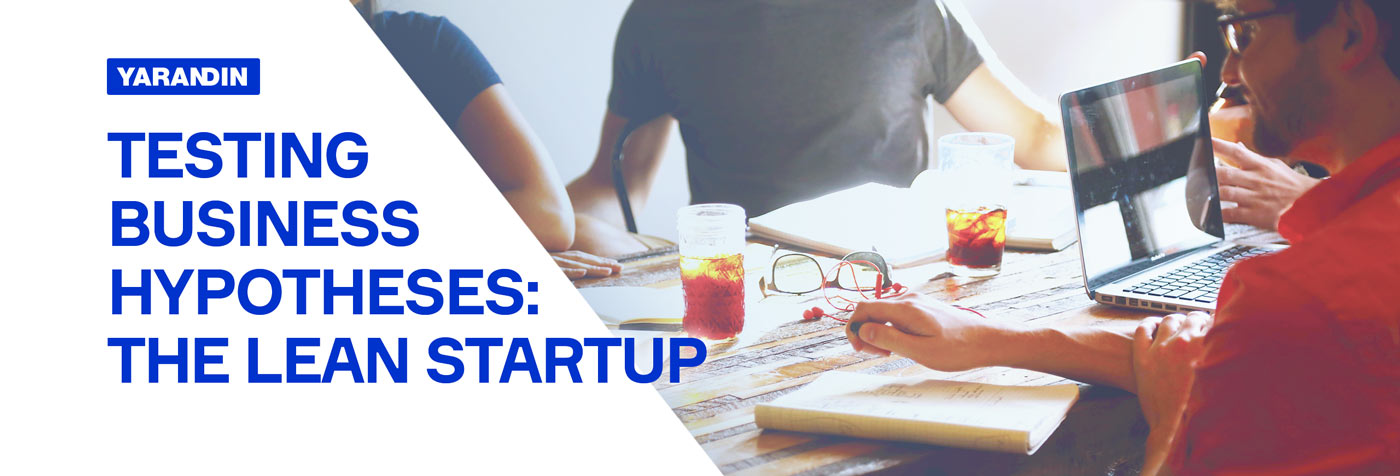In the previous article, our topic revolved around two different types of MVPs—the ones intended to prove a business hypothesis, and those whose goal is to disprove assumptions. Now it's time to delve deeper into the topic and focus on the concept of falsifiability—a scientific approach that helps entrepreneurs go about business hypotheses testing with MVPs.

Let’s recall that the lean startup is a hypothesis-driven approach to grow business that helps entrepreneurs overcome significant resource constraints and reduce the uncertainty they face in terms of the viability of new business models. In contrast to traditional, business-plan driven methods, lean startup entrepreneurs do not seek to grow their businesses in the early stages. Instead, they focus on validated learning—the process of gaining knowledge and learning from the market—a process that helps make their business sustainable. From a practical standpoint, the lean startup approach allows entrepreneurs to minimize the biggest risk they face—namely, spending their limited resources on building products that are not demanded in the market.
This is theory, and we have discussed this on several occasions. What we haven’t discussed is how exactly we should go about implementing a hypothesis-driven approach in our undertaking. Are there any specific steps one can follow to achieve a desirable result? The answer is yes.
No matter what kind of business an entrepreneur wants to be in, the first step is for him or her to decide what problems the new venture will address for potential clients––and to come up with solutions. This may sound simple in theory, but in practice this is one of the most tedious, abstract and, therefore, difficult tasks. That’s why it tends to be ignored by entrepreneurs in the hope that everything will become clear in the process. This is a common mistake that we tell our clients to avoid by encouraging them to always develop a strong vision before moving forward with any developments. Having a vision is important for any project, but it is even more important for lean startups because vision is used to generate falsifiable business hypotheses.
Only after a vision is developed can an entrepreneur proceed to the second step—translating it into a set of business hypotheses—the hypotheses that later in the process can be tested with MVPs. However, formulating business hypotheses is not a trivial task in itself, and, in many cases, it cannot be done without first having a well-defined business model. If this is true in your case, you can simplify the task by answering questions from four major categories: (1) value proposition (i.e., What problems do you solve for your customers? Which segments do you target? How are you different from competitors?); (2) go-to-market-strategy (i.e., What market channels will be used? What will be the expected customer lifetime value?); (3) technology and operations plan (i.e., What processes are required to manufacture products or serve clients? What can be outsourced and what cannot? How can your startup protect its intellectual property?); and (4) cash flows (i.e., What is the expected profit margin? What are the fixed costs? How much working capital is required? What are the projected cash flows?). The exact list of questions you’ll have to answer will, of course, be different from what we just provided. The point is to include everything that will help you to make your business model clear, and if you’re not sure what is relevant, don’t hesitate to contact the lean startup professionals who, like Yarandin, Inc., provide both MVP development and lean startup consulting services.

As soon as all the questions are answered, entrepreneurs can move to the task of formulating the set of falsifiable hypotheses for each of the business model elements. Here, the entrepreneur must be sure that all business hypotheses are falsifiable—that is, can be rejected by experiments—which is key for lean startup projects. In fact, this is what makes the lean startup methodology scientific given that only theories that are testable and capable of making falsifiable predictions can be considered scientific. Another important consideration to keep in mind is the need for quantitative analysis. To get the most out of hypothesis-driven approach, it’s mandatory to ensure that each business hypothesis has some quantitative metrics (such as conversion funnels, trends, and performance) for validation or rejection. That said, don’t try to develop comprehensive business hypotheses for each and every business model element. Lean startups imply an iterative process, and there will be plenty of opportunity for improvements going forward.
The steps described above are critical for successful implementation of the lean startup principles. However, this is only one part of the story. In the next article, we will focus on another aspect—developing MVPs capable of validating business hypotheses—and explain different MVPs that entrepreneurs can use in their favor. Meanwhile, don’t hesitate to contact us with any questions you may have.

